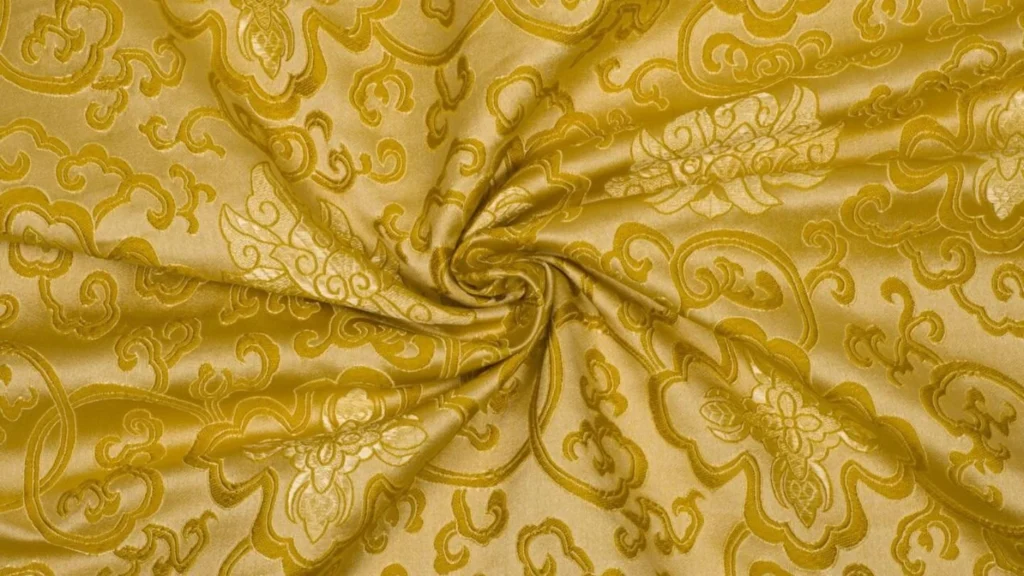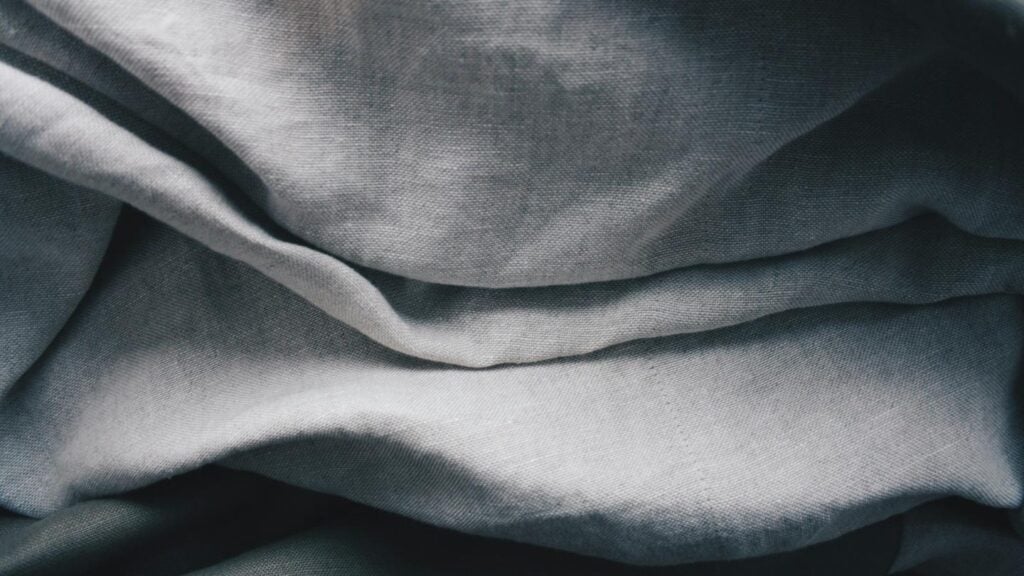2 – Benefits of Choosing Flannel Fabric
3 – Flannel vs Other Fabrics
4 – How Flannel Fabric Is Manufactured
5 – Common Uses in Fashion
6 – Understanding the Environmental Impact of Flannel
7 – Exploring Price Points and Value for Money
8 – Conclusion
9 – FAQs
What is Flannel Fabric?
Flannel fabric is a soft, warm, and slightly fuzzy textile that has earned its place as a staple in cold-weather wardrobes around the world. Originally made from wool, flannel has evolved over time and is now commonly woven from cotton, synthetic fibers, or blends. What sets flannel apart is not just its composition, but its finish: it undergoes a process called “napping,” where the fabric surface is brushed to raise fine fibers, creating a soft texture that enhances insulation and comfort.
Flannel is typically a plain or twill weave, which contributes to its flexibility and durability, making it ideal for a wide range of products—from cozy shirts and pajamas to bed linens and blankets. Its breathable nature allows it to retain warmth without causing overheating, which is one of the reasons why flannel remains a preferred fabric for layering in transitional seasons.
Here’s what defines flannel fabric:
- Soft and brushed surface: Created through napping, which gives flannel its signature warmth and comfort.
- Varied composition: Can be made from cotton, wool, synthetic fibers, or blends.
- Weave type: Usually plain or twill weave, offering durability and a soft drape.
- Common uses: Shirts, loungewear, sheets, and baby clothes—anywhere softness and warmth are key.
- Global popularity: Especially beloved in colder climates due to its insulating yet breathable qualities.
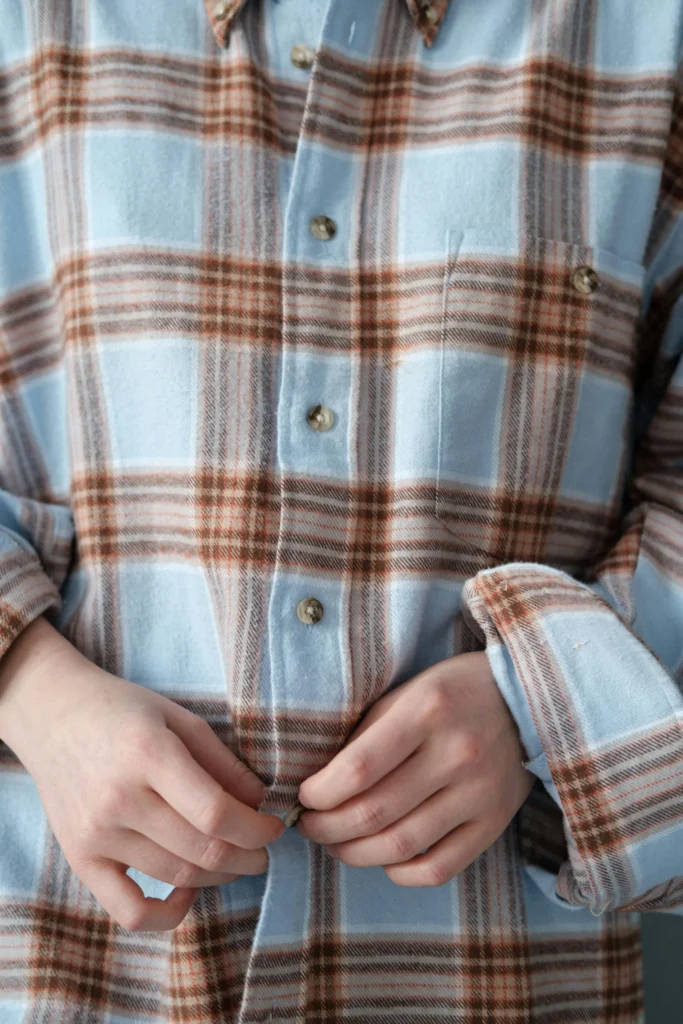
Benefits of Choosing Flannel Fabric
Flannel fabric is celebrated for its unmatched combination of comfort, warmth, and versatility, making it a top choice for a variety of garments and home textiles. Whether for fashion or function, flannel offers practical advantages that appeal to consumers across the globe. Here are the key benefits of choosing flannel fabric:
- Exceptional Softness
Thanks to its brushed surface (napping), flannel has a luxuriously soft hand feel that is gentle against the skin—ideal for pajamas, baby clothes, and bedding. - Natural Insulation
Flannel traps body heat while allowing breathability, providing warmth without causing overheating. This makes it perfect for colder months and fluctuating temperatures. - Breathability
Unlike synthetic-heavy winter fabrics, flannel made from cotton or wool allows air to circulate, reducing sweat buildup and enhancing comfort during extended wear. - Durability
With proper care, flannel holds up well over time. The twill or plain weave structure adds strength, making it suitable for daily use in both garments and home goods. - Moisture-Wicking Properties
Cotton and wool flannels naturally wick moisture away from the body, keeping the wearer dry and comfortable throughout the day or night. - Low Maintenance
Most flannel fabrics are machine washable and relatively easy to care for, making them a practical choice for families and frequent use. - Versatile Applications
From fashion to interiors, flannel is used in shirts, trousers, scarves, blankets, bed sheets, and upholstery, showcasing its adaptability across industries. - Aesthetic Appeal
Available in solid colors, plaids, and patterns, flannel offers a classic, cozy look that appeals to both casual and refined styles.
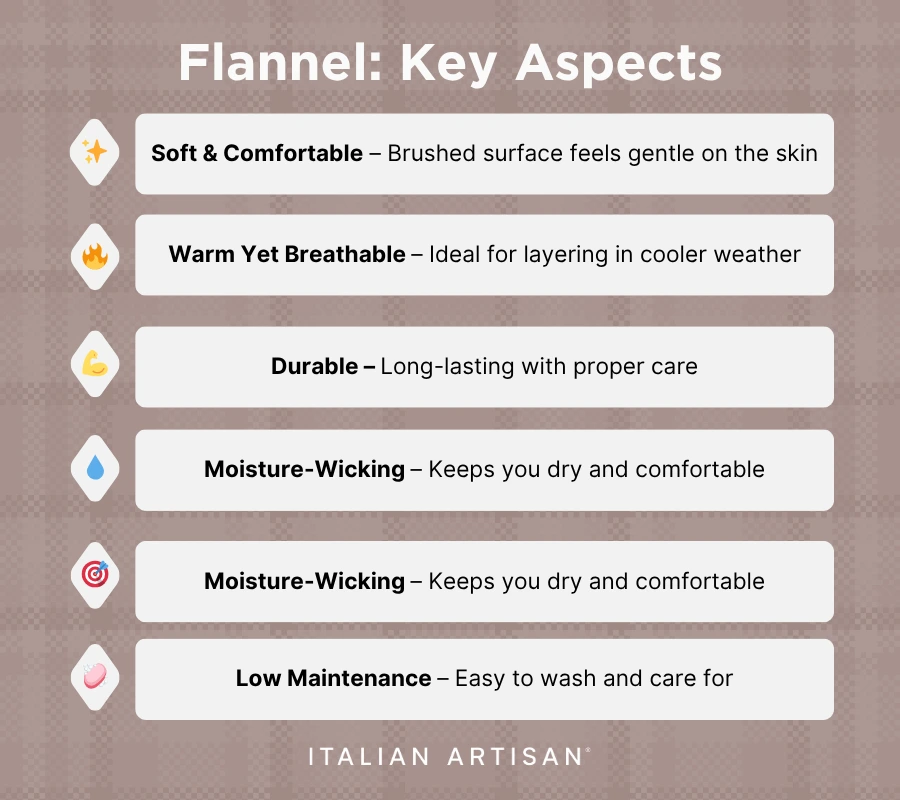
Flannel vs Other Fabrics
When choosing the right fabric, it’s important to consider the intended use, climate, and comfort preferences. Here’s how flannel fabric compares to other commonly used textiles:
- Flannel vs Cotton
Flannel is often made from cotton but undergoes a brushing process that gives it a soft, fuzzy finish and enhanced warmth. Regular cotton is smoother, lighter, and better suited for warm climates, while flannel is ideal for layering in cooler weather. - Flannel vs Wool
Both flannel and wool provide warmth, but wool is heavier and naturally more insulating. However, wool can feel coarse or itchy, while flannel—especially cotton flannel—offers a softer and more comfortable touch, making it preferable for direct-to-skin use like pajamas and sheets. - Flannel vs Fleece
Fleece, made from synthetic fibers like polyester, offers strong insulation and is water-resistant. However, it doesn’t breathe as well as flannel and may trap sweat. Flannel, being more breathable and natural in composition (especially when made from cotton), provides a better balance of warmth and airflow. - Flannel vs Linen
Linen is known for being crisp, breathable, and ideal for hot climates. Flannel, on the other hand, is thick, cozy, and better suited for fall and winter. While linen feels cool against the skin, flannel offers softness and insulation. - Flannel vs Polyester
Polyester is durable, quick-drying, and wrinkle-resistant, but lacks breathability and softness. Flannel is gentler on the skin and more comfortable for prolonged wear or sleep, especially in colder seasons. - Flannel vs Jersey Knit
Jersey is stretchy, lightweight, and great for casual wear or athletic clothing. Flannel is more structured and warmer, making it ideal for shirts, outerwear, and bedding during colder months.

How Flannel Fabric Is Manufactured
The production of flannel fabric involves a combination of traditional weaving techniques and specialized finishing processes that give it its signature softness and warmth. Here’s a clear step-by-step breakdown of how flannel is made:
- Fiber Selection
Flannel can be made from cotton, wool, synthetic fibers, or blends. Cotton and wool are most common, especially for apparel and home textiles due to their natural breathability. - Spinning
The raw fibers are carded (and sometimes combed) and then spun into yarn. Carding aligns the fibers, creating a softer and slightly fuzzier texture, ideal for the final brushed effect. - Weaving
The yarn is woven using either a plain weave or twill weave:- Plain weave produces a tighter, simpler structure.
- Twill weave gives the fabric a diagonal rib pattern, adding durability and drape.
- Napping (Brushing)
After weaving, the fabric is passed through large rotating brushes that raise the surface fibers in a process called napping. This brushing occurs on one or both sides of the fabric, giving flannel its signature soft, slightly fuzzy finish. - Shearing (Optional)
To ensure a uniform surface, the fabric may be sheared to trim any excessively long raised fibers, enhancing both appearance and texture. - Finishing Treatments
Flannel may undergo various treatments, such as:- Preshrinking to reduce fabric shrinkage during washing.
- Dyeing or printing to apply colors or patterns (plaids are especially common).
- Chemical finishes to improve wrinkle resistance or flame retardance (mainly in industrial applications).
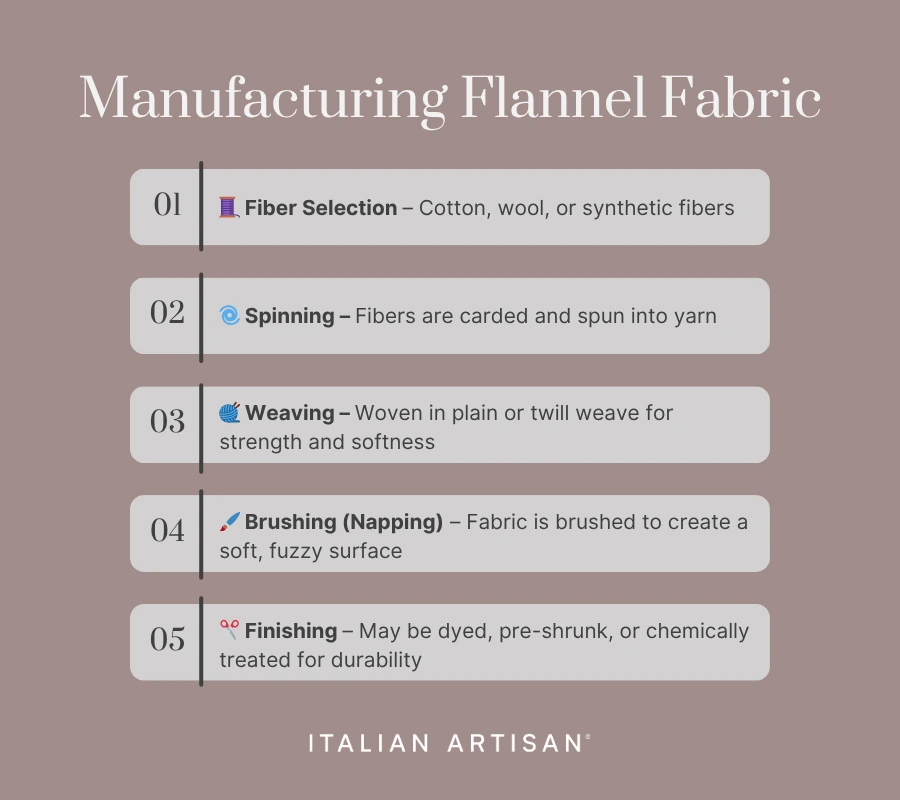
Produce your fashion collection with us
Common Uses in Fashion
Flannel’s cozy texture, warmth, and versatility make it a favorite in fashion, especially for fall and winter collections. Its ability to drape well while providing insulation makes it suitable for a variety of garments. Here are some of the most common uses:
- Flannel Shirts
A classic staple, especially in plaid patterns. Popular in casual, workwear, and grunge-inspired looks for both men and women. - Pajamas and Loungewear
Soft and breathable, flannel is ideal for sleepwear and at-home clothing, offering warmth without overheating. - Trousers and Skirts
Brushed wool flannel is often used in tailored garments like winter trousers, skirts, and suits, combining structure with softness. - Jackets and Overshirts (Shackets)
Heavier flannel is commonly used for layering pieces like overshirts and lightweight jackets, providing both warmth and style. - Scarves and Accessories
Flannel’s softness makes it a natural choice for scarves, beanies, and gloves, especially in colder climates. - Baby and Children’s Clothing
Thanks to its gentle feel against the skin, flannel is frequently used for baby rompers, onesies, and soft children’s shirts or pants. - Lined Garments
Flannel is often used as a lining in coats, vests, or boots to add warmth and comfort without bulk.
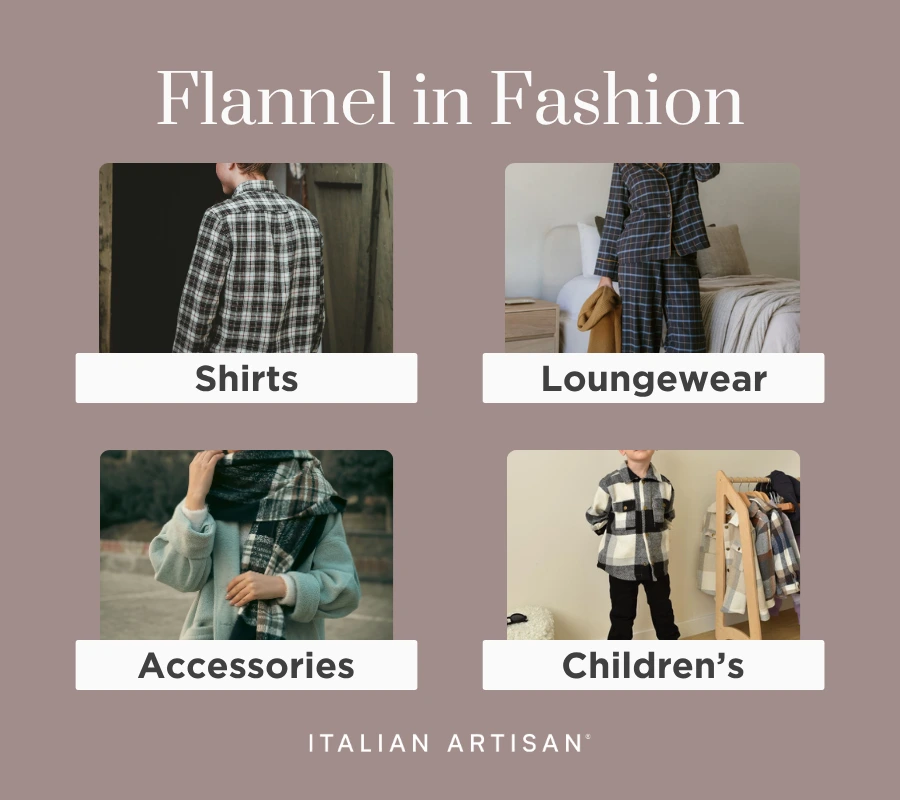
Understanding the Environmental Impact of Flannel
The environmental impact of flannel fabric largely depends on the fiber content, manufacturing processes, and end-of-life disposal. While flannel is often praised for being made of natural materials like cotton or wool, its sustainability varies significantly based on how it’s produced and finished.
Here’s a breakdown of key environmental considerations:
- Raw Material Source
- Cotton Flannel: Conventional cotton is resource-intensive, requiring large amounts of water, pesticides, and land. However, organic cotton flannel is a more eco-friendly alternative, using fewer chemicals and promoting soil health.
- Wool Flannel: Wool is renewable and biodegradable, but its production can raise concerns about methane emissions from sheep and land overgrazing if not properly managed.
- Synthetic Flannel (e.g., polyester blends): These are less sustainable, derived from petroleum, and non-biodegradable, contributing to microplastic pollution.
- Dyeing and Finishing
Flannel is often dyed and brushed (napped) to achieve its soft texture. These steps may involve chemical dyes, large water usage, and energy-intensive machinery, especially if done without environmental safeguards. - Energy & Water Consumption
The brushing/napping process consumes additional energy and water compared to untreated fabrics. Sustainable production methods aim to reduce this footprint through cleaner energy and water recycling systems. - Durability and Longevity
One of flannel’s sustainable strengths is its long lifespan. High-quality flannel garments can last for years, reducing the need for frequent replacements and contributing to more responsible consumption. - End-of-Life Impact
- Natural flannel (cotton or wool) is biodegradable, especially when undyed or minimally treated.
- Blended or synthetic flannel may not break down easily and can remain in landfills for decades.
How to Reduce the Environmental Impact:
- Choose organic cotton or ethically sourced wool flannel.
- Support brands that prioritize eco-conscious manufacturing and transparent sourcing.
- Care for flannel properly to extend its lifespan, avoiding excessive washing and high-heat drying.
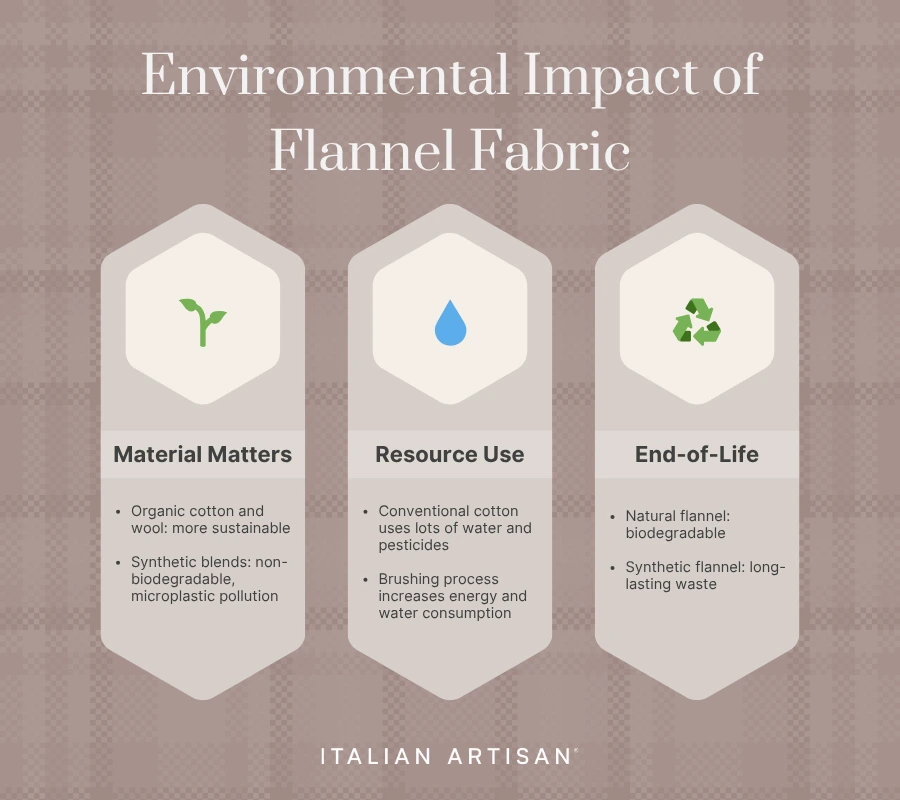
Exploring Price Points and Value for Money
Flannel fabric is available across a wide range of price points, largely influenced by its fiber content, quality, manufacturing process, and brand positioning. Whether you’re looking for budget-friendly options or premium pieces, flannel offers value through its comfort, durability, and seasonal relevance.
Factors Affecting Price:
- Fiber Composition
- Synthetic or blended flannel (e.g., polyester blends) is typically the most affordable but may lack breathability and softness.
- Cotton flannel offers better comfort and moisture-wicking properties, with prices varying based on thread count and origin.
- Wool flannel is the most expensive due to its natural insulating qualities and more intensive production process.
- Quality and Finish
Higher-quality flannel is brushed evenly, has a dense weave, and resists pilling over time. These features usually come with a higher price but also offer longer-lasting wear.
Value for Money:
- Cost-Per-Wear: Flannel garments, especially shirts and loungewear, tend to be worn frequently in colder months. Their durability means they provide excellent cost-per-wear over time.
- Timelessness: Flannel’s classic appeal—especially in plaids and solids—rarely goes out of style, ensuring long-term wardrobe relevance.
- Maintenance: Easy care (for cotton versions) adds to value by reducing upkeep costs, especially compared to delicate fabrics like silk or linen.

Conclusion
Flannel fabric is a soft, warm, and breathable material made from cotton, wool, or synthetic blends, known for its brushed finish and insulating properties. Used widely in clothing and home textiles, it offers comfort, durability, and versatility, especially in cooler climates. Compared to other fabrics, flannel stands out for its cozy texture and functional performance. While its environmental impact depends on the fiber and production methods, sustainable options like organic cotton and responsibly sourced wool enhance its eco-appeal. With a wide price range and excellent longevity, flannel remains a reliable, high-value choice for both everyday wear and seasonal essentials.
FAQs
- What is flannel fabric made of?
Flannel can be made from cotton, wool, synthetic fibers, or blends. Cotton flannel is the most common for clothing and bedding. - Is flannel the same as plaid?
No—plaid is a pattern, while flannel is a fabric. Many flannel garments feature plaid prints, but flannel can come in solid colors and other patterns too. - Is flannel warm enough for winter?
Yes, flannel is known for its insulating properties. It retains body heat well, making it ideal for cold weather, especially when layered. - Is flannel breathable?
Cotton and wool flannel are breathable, allowing air circulation while still keeping you warm. Synthetic flannel may be less breathable. - Does flannel shrink when washed?
Flannel made from natural fibers can shrink if washed in hot water or dried on high heat. Pre-shrunk or treated flannel is less likely to shrink. - How do you care for flannel fabric?
Machine wash in cold or warm water with mild detergent and tumble dry on low. Avoid high heat to prevent shrinking and preserve softness. - Is flannel eco-friendly?
It depends on the material. Organic cotton and responsibly sourced wool flannel are more sustainable. Synthetic versions are less eco-friendly. - Is flannel good for sensitive skin?
Yes, especially cotton flannel, which is soft and gentle on the skin. Wool flannel may cause irritation in some people unless it’s finely processed. - Can flannel be used year-round?
While best suited for cooler weather, lightweight cotton flannel can be worn in transitional seasons or used as breathable bedding. - What’s the difference between brushed and unbrushed flannel?
Brushed flannel has a soft, fuzzy surface created through napping. Unbrushed flannel feels smoother and is typically less warm.




